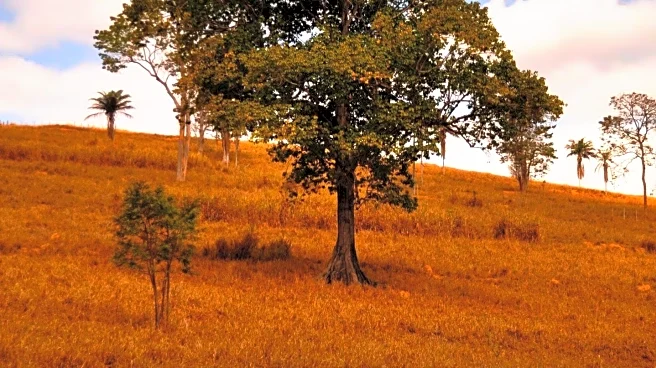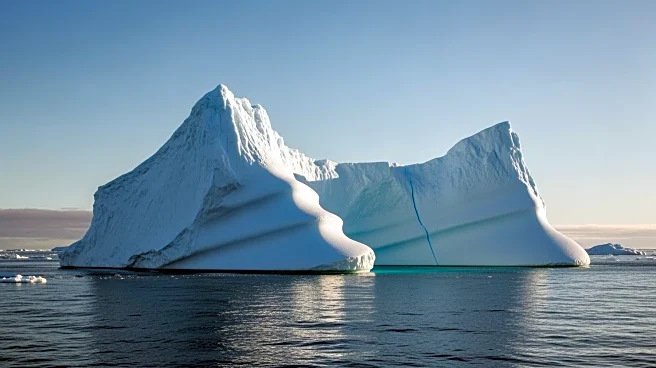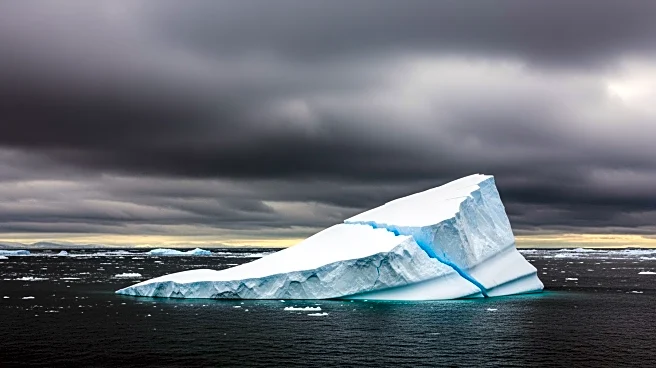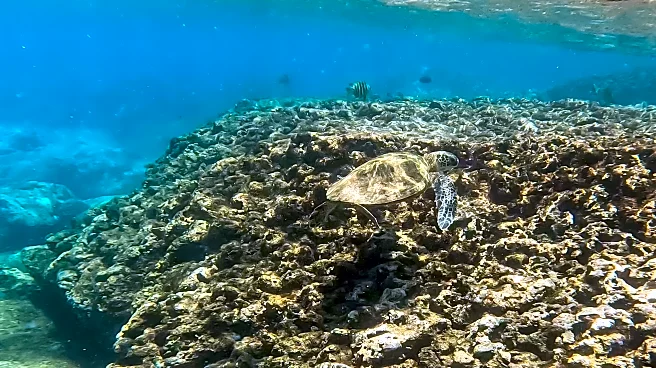What's Happening?
Scientists have reconstructed 30,000 years of Arctic sea ice changes by analyzing cosmic dust traces embedded in the seafloor. This study, published by the New York Times, provides insights into historical
sea ice levels and their fluctuations over millennia. The research indicates that Arctic sea ice has been declining over the last half-century, with a record-low maximum recorded in March. The study highlights the rapid transformation of the Arctic due to human-induced climate change, with the region warming nearly four times faster than the global average. The decline in sea ice impacts marine wildlife habitats and Indigenous communities, while also opening new shipping routes.
Why It's Important?
The decline in Arctic sea ice has significant implications for global climate patterns and ecosystems. As sea ice diminishes, more heat-absorbing ocean is exposed, contributing to a feedback loop that accelerates Arctic warming. This has consequences for marine wildlife, including polar bears and seals, and affects Indigenous communities reliant on ice for hunting and fishing. Additionally, the opening of new shipping routes raises geopolitical and national security concerns. Understanding historical sea ice levels through cosmic dust analysis provides valuable data for climate models and helps predict future changes in the Arctic environment.
What's Next?
The study's findings may prompt further research into the impacts of Arctic sea ice decline on global climate systems. Policymakers and environmental organizations could use this data to advocate for stronger climate action and conservation efforts in the Arctic. The opening of new shipping routes may lead to increased international interest and potential conflicts over Arctic resources. Indigenous communities may need support to adapt their practices to changing ice conditions. Continued monitoring and research are essential to understand the long-term effects of Arctic warming and to develop strategies for mitigation and adaptation.
Beyond the Headlines
The study underscores the interconnectedness of global climate systems and the importance of preserving Arctic environments. The decline in sea ice not only affects local ecosystems but also has broader implications for global weather patterns and sea level rise. Ethical considerations around the exploitation of Arctic resources and the rights of Indigenous communities must be addressed as the region becomes more accessible. Collaborative international efforts are needed to balance economic interests with environmental conservation and social justice.












